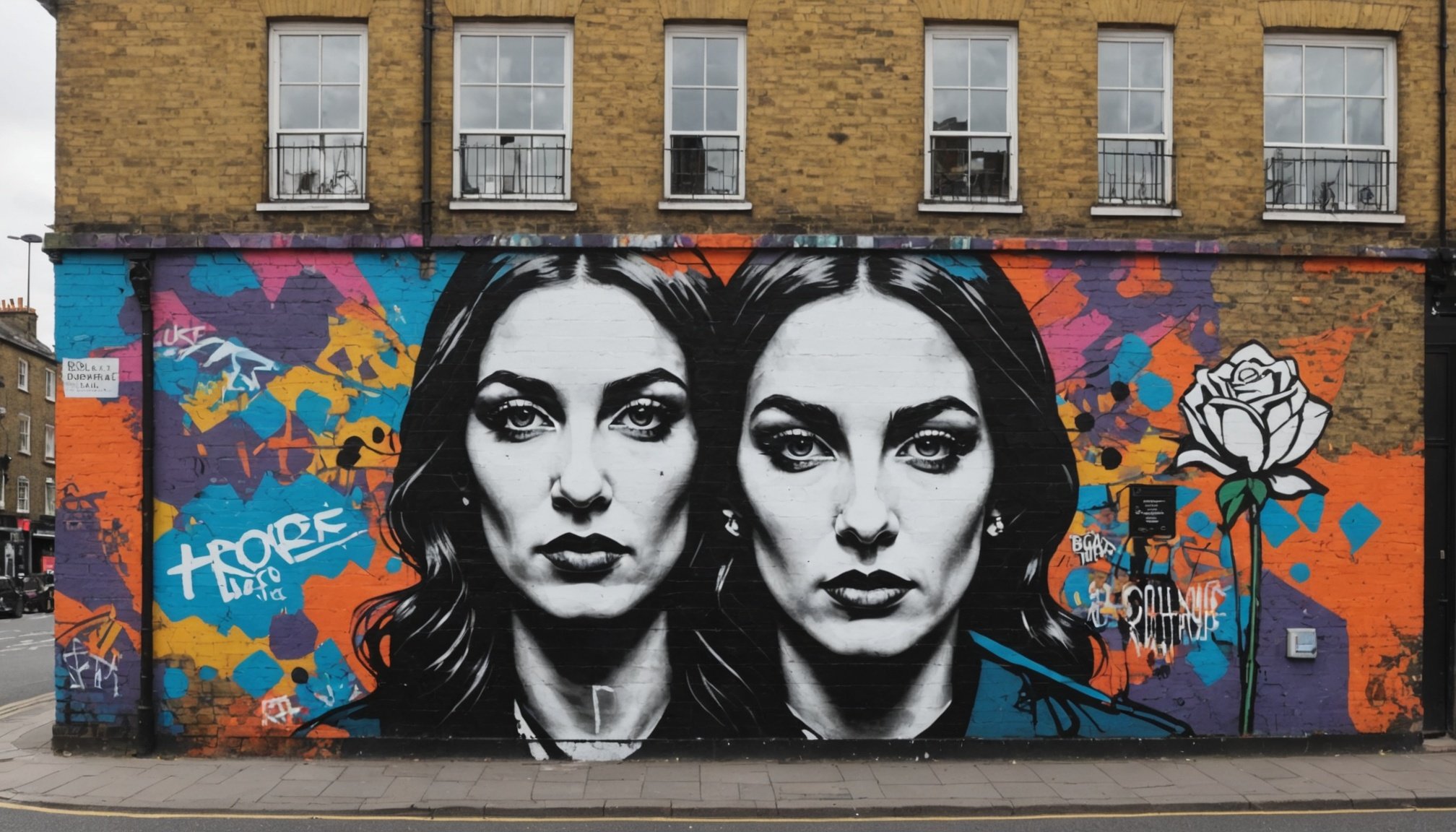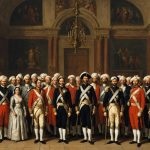Overview of London’s Street Art Scene
London street art has evolved from controversial origins to becoming a celebrated pillar of urban culture. Emerging in the late 20th century, street art was initially dismissed as vandalism. However, its expressive potential quickly gained traction, transforming London into a globally acclaimed urban art hub.
Street art in London reflects a blend of creativity and activism, offering social commentary on pressing issues like politics and identity. This vibrant scene is predominantly shaped by the city’s diversity and dynamic cultural exchanges. Street artists in London, such as Banksy, have elevated the art form, inspiring critical engagement and appreciation from the public.
Also read : Discover Liverpool’s Hidden Titanic Heritage: Must-Visit Historic Landmarks of the Tragic Vessel
The importance of street art in contemporary culture cannot be overstated. It challenges traditional art forms by making art accessible to anyone who walks the city’s streets. Not confined to galleries, urban art fosters community dialogue and represents a democratic expression of ideas.
Influences from graffiti pioneers to modern digital artists continue to shape London’s street art. The city’s unique mix of history and modernity encourages innovative expressions, cementing its reputation as a leading force in the urban art landscape.
Topic to read : Uncover the magic of milford sound: a travel guide
Top Neighbourhoods for Street Art Exploration
Exploring London’s urban art hotspots takes one on a vibrant journey through some of the city’s most dynamic areas. The best neighbourhoods for street art boast a tapestry of colourful murals, interactive installations, and thought-provoking pieces.
Shoreditch
Known as a veritable open-air gallery, Shoreditch is teeming with remarkable works by some of the city’s finest street artists. Here, wandering down Brick Lane and nearby streets reveals a treasure trove of ever-changing art on walls and buildings. Art enthusiasts will delight in spotting iconic pieces by renowned artists like Stik and Space Invader. Shoreditch offers a blend of traditional and modern urban artworks, providing an environment that inspires both artists and onlookers alike. While visiting, explore local cafés and boutiques that complement this artistic enclave.
Brixton
In Brixton, street art carries cultural significance tied to the area’s rich history. The murals found here often reflect the vibrant personality of the community, with must-see installations depicting themes of heritage and cultural narratives. Exploring Brixton’s art scene is best during daylight when the outdoor galleries are alive with colours. Locations such as Atlantic Road host a variety of artworks and are easily accessible, adding to the neighbourhood’s charm for art lovers and curious explorers.
Camden
Camden pulsates with artistic energy, offering more than just music and quirky markets—it’s a hub of expressive street art. Graffiti-coated railways and hidden walkways in Camden feature impressive works by both emerging and established artists. Visitors can immerse themselves in this lively artwork-filled setting while exploring by foot. Practical tips include using Camden Town tube station for convenient access and considering weekdays for a less crowded experience.
Hackney
Hackney’s street art scene has evolved dramatically over the years, becoming a distinguished canvas for expression. Its streets are dotted with key landmarks featuring pieces that reflect contemporary urban issues. Landmarks like Broadway Market are popular spots to witness art in full bloom. Visiting Hackney is made easy by numerous public transport options like Overground stations, ensuring seamless trips. It’s advisable to allow ample time to explore at a leisurely pace to fully appreciate the artworks.
Notable Street Artists in London
In the bustling metropolis of London, street artists have etched their mark on the urban landscape, fostering a distinct identity for the city’s art scene. Notable figures include Banksy, whose enigmatic works blend humour and political critique, captivating both local and global audiences. His pieces, such as “Girl With Balloon,” often appear unexpectedly, turning urban facades into celebrated artworks.
Another influential graffiti artist is Stik, known for his simplistic yet profound stick-figure murals. Each piece conveys emotive storytelling, reflecting socio-political themes that resonate with the city’s diverse population. His commitment to community projects further solidifies his role in London’s street art narrative.
Moreover, London art is shaped by collaborative projects that unite talents across styles and media. These initiatives foster a vibrant street art community, driving the evolution of techniques and stylistic diversity. Through partnerships with local councils and art organisations, street artists uplift neighbourhoods with their creativity, contributing to community identity and cohesion.
This fusion of biographical insights and the profound influence of different techniques defines London’s dynamic urban art scene, ensuring that its impact continues to thrive.
Must-See Artworks and Installations
Uncovering iconic street art across London offers an opportunity to witness unique cultural expressions. Renowned pieces become focal points for visitors exploring the city’s lively urban art landscape, with each artwork carrying a backstory that enriches the viewing encounter.
Top 10 Iconic Artworks
Among the diverse array of artworks, each one tells a story crafted by notable street artists known for their artistic innovation and influence. From Banksy’s revered “Girl With Balloon” to Stik’s emotionally charged stick figures, these creations encapsulate the essence of London street art.
- Banksy’s “Girl With Balloon”: This poignant image symbolises hope, famously appearing on a South Bank wall.
- Stik’s Stick Figures: Exploring themes of unity, these simple yet powerful pieces are scattered throughout East London.
Locations for these artworks often contribute significantly to their historical context and meaning, intertwining London’s rich history with contemporary narratives. Such art attracts not only locals but also tourists eager to understand the cultural significance behind these visual masterpieces.
Incorporating this knowledge into their exploration, visitors glimpse the depth of storytelling that makes street art a vital part of London’s urban scene.
Tips for Experiencing Street Art in London
Discovering London’s vibrant urban art scene can be a captivating experience, with countless street art tours and self-exploration options available. To enhance your visit, consider joining a guided tour. Professional guides offer insightful commentary, sharing the history and significance of each piece while navigating the city’s complex art-filled streets.
If you prefer a self-guided adventure, ensure you are equipped with a comprehensive street art map. These maps highlight the best spots and provide valuable context, allowing for a more enriching experience. Keeping a camera handy is essential, as capturing high-quality photographs of London’s street artists’ creations enables you to appreciate the intricate details and share the beauty with others.
When photographing, ensure you follow best practices. Avoid using flash to preserve the artwork’s integrity and respect any artists present in the area. As you explore the best neighborhoods for street art, maintain awareness of your surroundings and practice safety. Refrain from touching or damaging the art and be mindful of the environment and local etiquette. This respectful approach ensures a pleasant experience for all, celebrating the essence of street art in this dynamic city.
Visual Elements and Resources
Discovering London’s street art involves more than just wandering the streets; it calls for a well-equipped approach. Leveraging street art maps can significantly enhance your self-guided tours by pinpointing key locations and providing insights into each artwork’s significance. Many enthusiasts find these maps essential for an optimal city exploration.
To truly appreciate street art, high-quality photography is invaluable. Focus on capturing details without the use of flash, emphasising the vibrancy and textures. This approach not only respects the art but also ensures its beauty is preserved in your captures. Familiarise yourself with the basics of composition to elevate the quality of your photos.
Online platforms like forums and dedicated visual guides offer communities for street art enthusiasts to exchange their experiences. These resources can provide updates on new installations and artist activities, forming a bridge to connect with like-minded individuals. Engaging with these platforms enriches the experience, giving your discoveries a deeper context and an interactive dimension. The fusion of visual resources and community engagement fosters a comprehensive appreciation of the city’s dynamic street art scene.
Cultural Context and Impact of Street Art
London street art serves as a potent form of social commentary, effectively sparking cultural discussions across diverse communities. Often, these vibrant expressions challenge societal norms and provoke cultural reflections by illustrating pressing issues such as gentrification, inequality, and identity. This transformative dialogue not only enriches public spaces but also catalyses urban regeneration efforts, drawing tourists eager to delve into the city’s unique spirit.
Community engagement plays a crucial role in the dynamism of London’s street art scene. Many artists collaborate with local organisations and residents, ensuring that the artwork is imbued with meaning reflective of communal narratives. These initiatives foster a sense of ownership and pride among the inhabitants, making art a shared journey rather than an isolated masterpiece.
Additionally, the impact of street art on urban regeneration cannot be overlooked. Iconic murals and hidden gems transform neglected areas into creative hubs, boosting local economies by attracting visitors and aspiring artists. By re-imagining public spaces, street art cultivates a vibrant atmosphere that encourages exploration and appreciation, illustrating its capability to breathe new life into urban landscapes.










